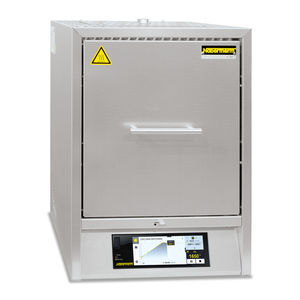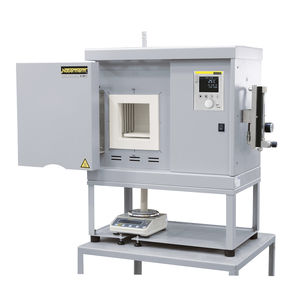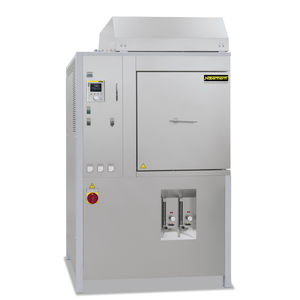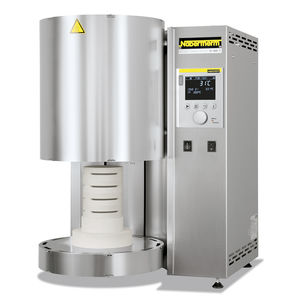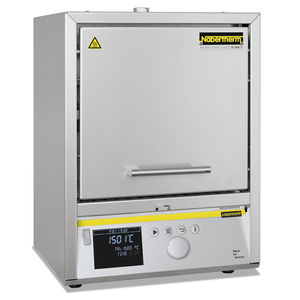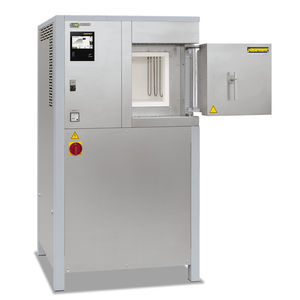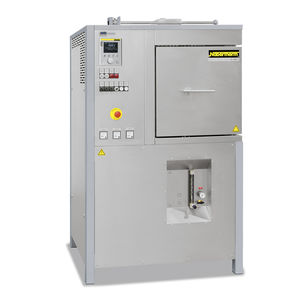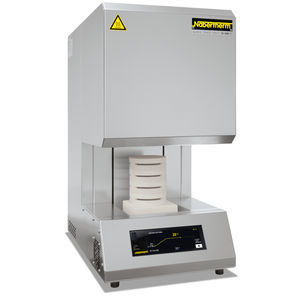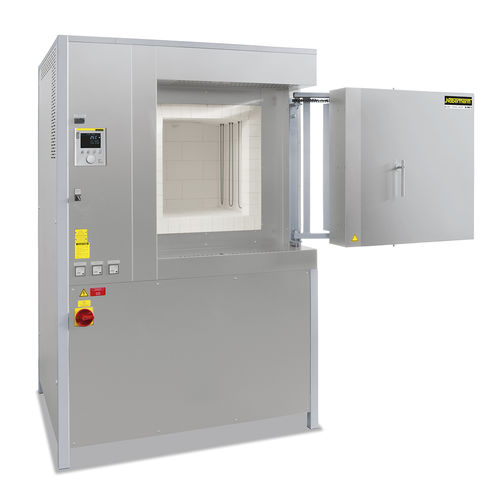
- Products
- Catalogs
- News & Trends
- Exhibitions
Heat treatment furnace HFL serieschambergashigh-temperature



Add to favorites
Compare this product
Characteristics
- Function
- heat treatment
- Configuration
- chamber
- Heat source
- gas
- Other characteristics
- high-temperature
- Maximum temperature
1,600 °C, 1,700 °C
(2,912 °F, 3,092 °F)- Capacity
Max.: 160 l
(42.27 gal)Min.: 16 l
(4.23 gal)- Width
1,010 mm, 1,140 mm, 1,240 mm, 1,410 mm
(39.76 in, 44.88 in, 48.82 in, 55.51 in)- Height
1,990 mm, 2,260 mm, 2,310 mm, 2,490 mm
(78.35 in, 88.98 in, 90.94 in, 98.03 in)- Depth
890 mm, 940 mm, 990 mm, 1,240 mm
(35.04 in, 37.01 in, 38.98 in, 48.82 in)
Description
The high-temperature furnaces HFL 16/16 HFL 160/17 are characterized by their lining with robust light refractory bricks. This version is recommended for processes producing aggressive gases or acids, such as under glass melting.
Standard Equipment
• Like high-temperature furnaces HT, except:
• Robust refractory brick insulation and special backing insulation
• Furnace floor made of lightweight refractory bricks accommodates high charge weights
• Chain-guided parallel swivel door for defined opening and closing of the door without destroying the insulation
• Labyrinth sealing ensures the least possible temperature loss in the door area
• Defined application within the constraints of the operating instructions
• NTLog Basic for Nabertherm controller: recording of process data with USB-flash drive
Catalogs
Exhibitions
Meet this supplier at the following exhibition(s):


Related Searches
- Nabertherm oven
- Nabertherm chamber oven
- Nabertherm electric oven
- Nabertherm heat treatment oven
- Drying furnace
- Nabertherm laboratory oven
- Nabertherm combustion oven
- Nabertherm gas oven
- Tunnel furnace
- Nabertherm stainless steel oven
- Baking oven
- Controlled atmosphere furnace
- Nabertherm high-temperature oven
- Industrial furnace
- Nabertherm vacuum oven
- Nabertherm automatic oven
- Digital furnace
- Continuous furnace
- Forced convection furnace
- Annealing furnace
*Prices are pre-tax. They exclude delivery charges and customs duties and do not include additional charges for installation or activation options. Prices are indicative only and may vary by country, with changes to the cost of raw materials and exchange rates.






